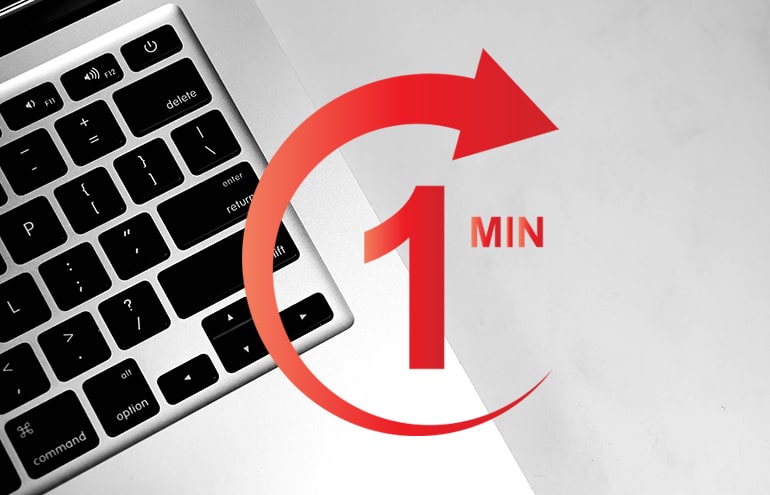What difference can a minute make? It may surprise you to learn that one minute can mean the difference between successfully completing two tasks or fumbling them both. Let’s explore how this theory applies to legal editing tasks and helps us with documents we create at work.

One Minute Makes a Difference: The Science Behind Task Switching
In a study published in Organization Science and discussed in a Harvard Business Review article, researchers tested how office workers could recover from interruptions. The researchers found that two things made a significant difference in successfully switching tasks:
- The time workers would have to complete the initial task once they returned to it
- Whether they quickly planned for returning to the initial task
Researchers called this plan the “Ready-to-Resume Plan,” and it only takes a minute to create this plan for it to be effective.
Here’s how researchers described the two approaches.
Memory for Goals
“The seconds right after the individual is made aware of the interruption — but before attention is directed to the intervening task — is an opportunity for the [task] to be strengthened in memory for later activation.”
Researchers called this a task marker. A task marker can be something as simple as a mark on your checklist or a notation on your document where you left off.
Ready-to-Resume Plan
“This simple and brief practice of taking stock of where one stands on an interrupted task and briefly planning one’s return helps the brain feel more at ease with putting it aside and switching attention to an interrupting demand.”
Like a task marker, this can be a mark on a checklist or a notation on your document.
How to Apply These Approaches to Your Workday
Under either approach, when interrupted, spend one minute writing down where you were in the initial task before starting on the intervening task. Then, you can mentally release the initial task and attend to the interrupting task, thus doing a better job at the interrupting task.
When you return to the initial task, the task marker will help you more effectively refocus on it and complete it with higher accuracy. This short delay to create a plan or make a note before starting the interrupting task improves the outcomes for both tasks.
The Legal Editing Process Is a Cycle of Task-Switching
Let’s apply this concept of the one-minute plan to your editing process. Effective editing is methodical, strategic and focused. It involves anywhere from three to six levels of work, ranging from exhaustive and in-depth substantive editing to skimming and superficial correcting.
You must decide which type of editing you’re doing before you begin the work.
Each type of editing includes different tasks and requires a different mindset. Attempting to do every type at once will overwhelm your working memory because each type requires different thinking and skills. Trying to perform all the tasks in the same pass results in a continuous cycle of task-switching.
Group your editing tasks and approach them in order of specificity:
- Start with substantive editing for clarity, organization and structure.
- Next, work on sentence-level editing for style and flow.
- Finally, work on mechanical corrections and proofreading.
Think of these groups as phases where you complete one phase before moving on to the next. Each phase has subsets of tasks. Use the subsets as a checklist for your review. It may take several cycles of phases and checklists until you’re pleased with the results.
Apply the One-Minute Plan to Legal Editing Tasks
With your editing phases and checklists ready, you’re prepared to overcome interruptions. Start editing, and when you receive an email or text alert, or a colleague otherwise intrudes on your work, don’t shift your attention to it right away. (You can ask the colleague to wait one minute.)
During this minute, note where you are on your checklist, and make a plan to return after you’ve addressed the interruption. This will free your mind to focus on the interrupting task and ease your return.
Legal Writing and Speaking Tips from Attorney at Work
- Writing and Editing for Empathy in Legal Marketing
- How to Master the Subjunctive and Conditional for Precise Legal Writing
- Editing, Citations and the Table of Authorities: Keys to Persuasive Legal Writing
- The $4.85 Million Comma
- Does This Writing Pass the AI Test?
- Not Paying Attention When We Told Lawyers to Be Concise?
- Grammar Quiz: What’s Wrong With These Sentences?
- Innumeracy Strikes Again — and Again
- The Articulated Pause: You Don’t Have to Make Noise While You Think
- The Misguided Appeal of the Aggressive Lawyer
Image © iStockPhoto.com.

Sign up for Attorney at Work’s daily practice tips newsletter here and subscribe to our podcast, Attorney at Work Today.
















